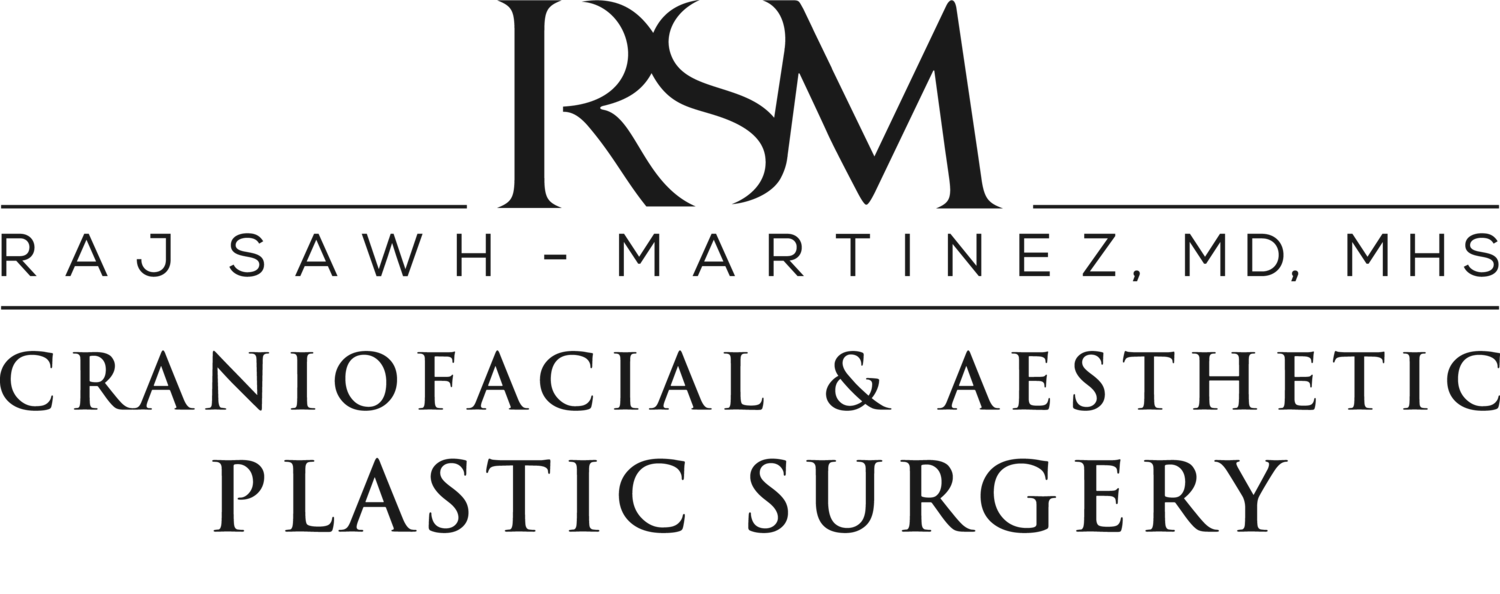
Vascular Malformations (Birthmarks, Growth, Hemangiomas)
Orlando, FL
Fellowship-trained craniofacial surgeon Dr. Raj Sawh-Martinez is skilled to surgically treat Orlando area children experiencing vascular malformations. This type of birthmark or growth is often present at birth and made up of blood vessels that can cause functional or cosmetic problems.
Hereditary vascular malformations can involve arteries, capillaries, and combinations of other important blood vessels. While many of these malformations are present at birth, others may not appear until childhood or teenage years. There are several various types of vascular malformations, which are named according to which type of blood vessel is being affected.
The most common blood vessel abnormality that impacts children in their infancy are hemangiomas. If your child has a vascular malformation that may need surgical treatment, contact Craniofacial & Aesthetic Plastic Surgery in Orlando, FL to schedule your consultation with Dr. Sawh-Martinez.
Hemangiomas occur in about 10–12% of Caucasian children and are nearly twice as common in premature infants. For unknown reasons, the occurrence in children of African American or Asian lineage is much lower, at only 0.8–1.4%. These growths appear to be between 2 – 6 times more common in females than in males.
The great majority of this type of malformation is located in the head and neck area but can be found throughout the body, as well as internally. Currently, approximately 60% of patients with hemangiomas require some form of corrective surgery following a hemangioma removal procedure.
Vascular Malformation Removal Technique
The most commonly used technique for small vascular malformation removal is simple and involves removing the abnormal vascular tissue with a standard excision technique. In some situations, Dr. Sawh-Martinez may use an elliptical, circular, or irregular incision shape removal. These techniques result in a shorter scar that can be treated down the line.
Larger, more extensive lesions may require angiography, a technique that involves tracing the path of the blood vessels responsible for the lesion and embolizing them, blocking them from further "feeding" the growth. This process is then followed by complete removal of the lesion.
Depending on the location, size, and nature of the growth, the surgery may be done on an outpatient or inpatient basis. Small lesions can typically be numbed with local anesthetic and removed in one of our treatment rooms while larger, more complex lesions will require general anesthesia and a hospital setting for removal.
What to Expect after Vascular Malformation Removal
It is important to consider that a fully normal appearance following surgery is not likely. The growth will be removed and appearance improved, but scarring is highly likely. Growths that were significantly disfiguring will be substantially improved. Aftercare for vascular malformation removal involves wound care and regular bandage changing.
A member of our team or the hospital nursing staff with go over these instructions in detail before you and your child are released to return home. The greatest risk of a hemangioma excision is heavy bleeding during surgery. Dr. Sawh-Martinez will use special surgical tools to reduce this risk and handle the issue should it arise during the procedure.
Careful, Compassionate Care
When a growth, tumor, or large birthmark affects your child's appearance, it is incredibly normal for you to worry about their future. Will they feel self-conscious? Will they be teased? Rest assured that Dr. Sawh-Martinez is skilled in the removal of several varieties of vascular malformation and can help answer questions and create a treatment plan for your child. If you are ready to discuss surgical treatment for your child's hemangioma or another vascular malformation, schedule a consultation today at Craniofacial & Aesthetic Plastic Surgery in Orlando, FL.
